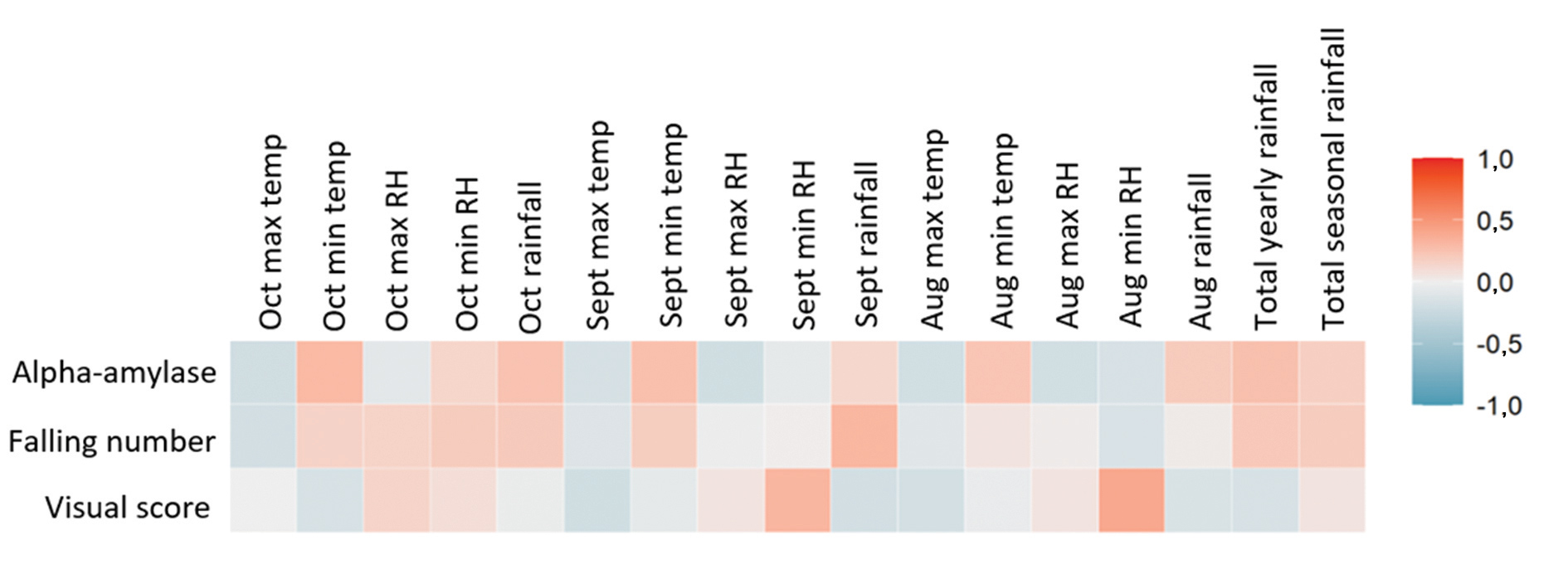
Department of Agronomy, Stellenbosch University

Prof Pieter Swanepoel, Department of Agronomy, Stellenbosch University

Willem Botes, Department of Genetics, Stellenbosch University
Amidst shifting weather patterns, the threat of pre-harvest sprouting (PHS) of wheat has increased, prompting further research into strategies to prevent or minimise PHS. A multitude of crops are affected by PHS, including wheat, barley, rye, rice, sorghum, and maize – negatively impacting seed quality and potentially resulting in substantial economic losses.
Consequently, understanding the risks associated with PHS of wheat and the factors contributing to it, is crucial.
What is pre-harvest sprouting?
Pre-harvest sprouting is characterised as the premature germination of the grain while still intact to the plant before harvest and is influenced by a combination of environmental and genetic factors, as well as their interaction (Photo 1 and 2). Environmental conditions, including rainfall, warm temperatures and high humidity, coupled with a lack of seed genetic dormancy, contribute to PHS. Rainfall is a prerequisite for PHS to occur, while high relative humidity prolongs seed wetness, increasing the possibility of water uptake by the seed. Similarly, the physical characteristics of the wheat spike will also impact the time the seed remains wet.
Physical features such as the presence of awns and spike waxiness will impact the ability of the plant to repel water. These features will determine the quantity of rainfall that remains on the spike and the length of time the spike remains wet after a rainfall event. The orientation of the spike will influence the quantity of water remaining on the spike, with drooped spikes posing a higher risk of PHS.
Additionally, seed coat characteristics such as seed coat hardness, and seed dormancy significantly affect PHS susceptibility. Harder seed coats have an increased water uptake rate, which in turn leads to an increased rate of seed germination and more starch damage than softer seed coats. Therefore, harder seed coats are at a higher risk for PHS during conducive conditions.

With the initiation of seed germination, enzymes are produced in the seed, resulting in starch breakdown. The impact of this starch breakdown is significant since the seed starch is an integral factor in the quality of end-products produced from the seed. Therefore, damage to the starch will result in a decrease in the quality of the grain and an associated decrease in price.
The role of seed dormancy in PHS
The extent of seed dormancy will impact how long the seed will take to germinate given that conditions suitable for germination have occurred. Seeds with a low seed dormancy will be at higher risk of PHS when conducive conditions occur. Environmental conditions throughout the growing season determine the extent of seed dormancy of harvested seeds. Similarly, conditions throughout the season will affect seed dormancy and, in turn, PHS. Since seed dormancy is a genetic trait, it will vary with cultivar choice. Certain cultivars are therefore more susceptible to PHS in different environments.
To evaluate the interaction between the environment and cultivar choice on PHS susceptibility, a trial with the Department of Science and Innovation (DSI), the Technology Innovation Agency (TIA) and Grain SA was conducted in the Western Cape. In this study, researchers evaluated correlations between weather conditions in August, September, and October in the Western Cape, with the darker the shade of red, the larger the impact that the environmental condition had on PHS risk (Figure 1).

A key finding from this study indicated that certain environmental conditions increased the risk for PHS before the harvesting period. Specifically, environmental conditions of relative humidity and minimum temperature in August, minimum relative humidity, minimum temperature and rainfall in September, and minimum temperature and rainfall in October increased the risk of PHS. Therefore, conditions throughout the season impact the risk of PHS and not only conditions over the harvesting period. However, rainfall must be present to trigger PHS.
How can PHS be prevented?
Addressing PHS requires a multifaceted approach, incorporating both proactive measures and continuous research. Although PHS has been a global challenge for decades, there has been a lack of research on management strategies to combat it. However, by utilising information on seasonal weather conditions and an understanding of cultivar characteristics, producers can mitigate the risk of PHS.
Selecting cultivars which are most stable and adapted to certain environments in terms of PHS is critical. This ensures stability and reduces the risk of unexpected variation in PHS susceptibility. Combining practical solutions with continued research can help minimise the impact and risk of PHS on productivity. Additionally, ongoing research into cultivar susceptibility, factors contributing to PHS, and management practices is imperative. This research is in progress and offers the potential for developing strategies to mitigate PHS risk in the future.
Currently, research is underway at the Department of Agronomy at Stellenbosch University, focusing on evaluating management practices such as fungicide applications, and their impact on PHS susceptibility. Furthermore, ongoing research is exploring the impact of environmental factors, cultivar choice, and their interaction with PHS susceptibility as well as recommendations for cultivar selection based on environmental factors in the Western Cape. Additionally, the scope of research will expand, commencing from the 2024 growing season, to include the evaluation of PHS in barley. This research includes evaluating environmental, genetic and management factors and their interaction with PHS susceptibility.



























